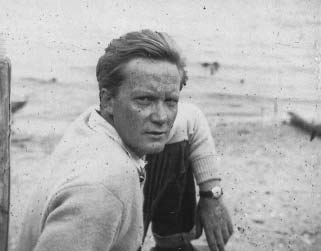The Talented Miss Highsmith (71 page)
Read The Talented Miss Highsmith Online
Authors: Joan Schenkar

Found in the Street
was dedicated to faithful Kingsley Skattebol, who had lived for years in the mise-en-scène of that novel, Greenwich Village: first on West Eleventh Street and then at One Christopher Street.
Small g,
Pat's posthumous novel, was inscribed to “my friend Frieda Sommer”âanother of Pat's “good eggs”: a woman from Zurich prone to crushes on prominent women, who did Pat many favors and who was responsible for much of the Zurich research for
Small g
. Pat eventually made Frieda Sommer one of the trustees of her final will. Only
Ripley Under Water
(1991) was not inscribed to an individual but to the “dead and dying among the Intifadeh and the Kurds.” It was a dedication with which Pat hoped to make a point and raise some hackles. In the end, the hackles she raised were mostly her own.
Meanwhile, at the end of the 1970s, sweetness, a little light, and fun fun fun were the themes of Pat's letters to Monique Buffet. But because this was, after all, Patricia Highsmith writing letters to a young lover, some imp of the perverse was bound to make a cameo appearance, and occasionally, through Pat's shiny filter of “fun,” the little imp showed up. “Just so you will destroy this letter, I shall add, that I love lying on top of you (if I do not weigh too much) and kissing your neck. Don't you think your father would enjoy this letter?”
46
In the meantime, Monique, struggling with two relationships, did not emerge unscathed. She thinks that the seven cysts she had to have removed from her eyes during the time she was intimate with Pat (Pat, typically, did a drawing of her treating one) were a
“somatisation”
of her feelings about their situation. Pat, she said, never forced her to make love although she could be tacitly very insistentâand Monique made love with Pat because she wanted to. Still, every time she did so she “felt bad.” Monique was newly in love with another woman, and seeing Pat was like “walking a tightrope” for her.
47
For Monique, Pat “had the stigmata of alcoholism,” but she also “had a great charm, incredibly piercing eyes like an Indian, her voice was lovely, she had a very soft voiceâ¦. She looked directly at meâ¦up through her hair with her head down. [And] she was so tender and so attentive and so affectionate that you forgot that she looked butch.”
48
Pat could still attract, could still, in the late 1970s and early 1980s, act out of a softer part of herself and try to re-create some of the fun she'd had when she was Monique's age. In this affair she was playing down both her feelings and her reputation.
“PLEASE do not consider me a heavyweight, or an intellectual, or a good writer, or anything serious like that. With you it is nice to have fun, and I want you to have fun also, with me or anyone else.”
49
And so Pat's relations with Monique Buffet provided a partial resolution of the perpetual “romantic” problem she had described clearly, clausally, and with a great deal of psychological sourcing to Alex Szogyi in 1969:
I may not be capable of [love]â¦. I want something romantic, perhaps not definite. If I have the steady thing, I reject it; this has happened over and overârather I made it happen. I repeat the pattern of mother's semi-rejection of me. Her “abandonment” of me to my grandmother, when I was aged 12, when my mother took me to Texas, with a promise she would divorce my stepfatherâ¦but within a couple of weeks, my stepfather came from New York and took her away, back to New York, and I was left for a dismal yearâgoing to school with kids two and three years older than Iâin Texasâ¦. I never got over it. Thus I seek out women who will hurt me in a similar manner, and avoid the women who areâgood eggs.
50
30
â¢
Les Girls
Part 14

Allela Cornell drawing for dollars near her studio in Greenwich Village. During their short affair, Allela painted a prophetic portrait of Pat. (
Swiss Literary Archives
)
Â

Pat on the Circle Line, the boat that goes around Manhattan, in the 1940s. Shipping out to anywhere was what she loved best. (
Swiss Literary Archives
)
Â
THE “JEANNOT” ALBUM: Jean David (“Jeannot”), a French cartoonist from Marseille who was a friend of Mary and Pat Highsmith since the 1930s, kept these unique photographsânever before publishedâof Pat and Mary on album pages, which he decorated to represent their lives. The pen notes on the photographs are by Pat, suggesting that it was she who sent them to Jeannot. (
Collection Annebelle Potin
)






Â

West House at Yaddo. It was on the floorboards of West House porch that Flannery O'Connor, to Pat's everlasting disgust, said she saw an image of the radiant face of Jesus. (
Collection the Corporation of Yaddo; photographer Joseph Levy
)
Â

Marc Brandel, Pat's “fiancé” of the late 1940s, on the beach in Provincetown in 1955,
the year before he adapted
The Talented Mr. Ripley
for American television's
Studio One
. (
Collection Ruta Brandel Dauphin
)
Â

Kathleen Wiggins Senn, the married woman whose two-minute meeting with Pat in Bloomingdale's department store in 1948 sparked Pat's most personal novel,
The Price of Salt
. (
Collection Priscilla Senn Kennedy
)
Â

Kathleen Wiggins, unmarried and flying a plane. (
Collection Priscilla Senn Kennedy
)
Â
